BUDESONIDE SUSPENSION FOR NEBULIZER - INHALATION
PHONETIC PRONUNCIATION: (bue-DES-oh-nide)
COMMON BRAND NAME(S): Pulmicort
GENERIC NAME(S): budesonide
Uses
USES: Budesonide is used to control and prevent symptoms (wheezing and shortness of breath) caused by asthma. This medication belongs to a class of drugs known as corticosteroids. It works directly in the lungs to make breathing easier by reducing the irritation and swelling of the airways. This medication must be used regularly to be effective. It does not work right away and should not be used to relieve sudden asthma attacks. If an asthma attack occurs, use your quick-relief inhaler as prescribed.
How to use BUDESONIDE SUSPENSION FOR NEBULIZER - INHALATION
HOW TO USE: Read the Patient Information Leaflet provided by your pharmacist before you start using this medication and each time you get a refill. Follow the illustrated directions for the proper use of this medication. Make sure you understand how to operate the breathing machine (compressed air jet nebulizer with face mask or mouthpiece) and how to properly clean it to prevent infections. If you have any questions, consult your doctor, pharmacist, or respiratory therapist. Do not use this medication in an ultrasonic nebulizer. Do not mix budesonide suspension with other medications in the nebulizer. A parent or other responsible adult should supervise a child who is using this machine. If you have any questions, ask your heath care professional. Shake the container gently before use. The dosage is based on your medical condition and response to treatment. This medication comes in different strengths. Check that you are using the correct strength. Inhale this medication by mouth, usually once or twice daily or as directed by your doctor. While inhaling this medication, breathe calmly and deeply until the mist stops, usually over 5 to 10 minutes. Avoid getting the medication in the eyes. To prevent dry mouth, hoarseness, and oral yeast infections, gargle and rinse your mouth with water after each use. Do not swallow the rinse water. Also, wash your face where the face mask/mouthpiece has touched your skin to prevent skin reactions and irritation. Use this medication regularly in order to get the most benefit from it. To help you remember, use it at the same time(s) each day. Do not increase your dose, use it more frequently, or stop using this medication without first consulting your doctor. Learn which of your inhalers/medications you should use every day (controller drugs) and which you should use if your breathing suddenly worsens (quick-relief drugs). Ask your doctor ahead of time what you should do if you have new or worsening cough or shortness of breath, wheezing, increased sputum, worsening peak flow meter readings, waking up at night with trouble breathing, if you use your quick-relief inhaler more often (more than 2 days a week), or if your quick-relief inhaler does not seem to be working well. Learn when you can treat sudden breathing problems by yourself and when you must get medical help right away. If you are regularly using a different corticosteroid (such as prednisone), you should not stop using it unless directed by your doctor. You may have withdrawal symptoms if the drug is suddenly stopped. Some conditions (such as asthma, allergies) may become worse when the drug is suddenly stopped. To prevent withdrawal symptoms (such as weakness, weight loss, nausea, muscle pain, headache, tiredness, dizziness), your doctor may direct you to slowly lower the dose of your old medication after you are using budesonide. Consult your doctor or pharmacist for more details, and report any withdrawal reactions right away. See also Precautions section. You may notice a benefit within 2-8 days of starting this drug. It may take up to 4-6 weeks of regular use before the full benefit of this drug takes effect. Tell your doctor if your symptoms do not improve or if they worsen.
Side Effects
Precautions
Interactions
Overdose
Images
Reviews
Faq for BUDESONIDE SUSPENSION FOR NEBULIZER - INHALATION
Budesonide suspension for nebulizer is a medication that is inhaled into the lungs using a nebulizer machine. It contains budesonide, which is a corticosteroid that helps reduce inflammation in the airways.
Budesonide suspension for nebulizer is primarily used for the treatment of asthma. It helps to control and prevent asthma symptoms by reducing inflammation and swelling in the airways.
Budesonide works by reducing inflammation in the airways, which helps to open up the breathing passages and make breathing easier. It also helps to prevent the release of substances in the body that cause inflammation.
To use budesonide suspension for nebulizer, you will need a nebulizer machine. Follow the instructions provided by your healthcare provider or on the medication package. Generally, the suspension is diluted with sterile saline solution and then poured into the nebulizer cup. The machine converts the liquid into a fine mist that can be inhaled through a mouthpiece or mask.
Some common side effects of budesonide suspension for nebulizer include headache, throat irritation, cough, nausea, and hoarseness. In rare cases, it may cause serious allergic reactions or high blood pressure. Contact your healthcare provider if you experience any severe or persistent side effects.
It is important to consult with your healthcare provider before using budesonide suspension if you are pregnant or breastfeeding. They will evaluate the potential risks and benefits and determine if it is safe for you to use.
It may take a few days to weeks for budesonide suspension to start working effectively. It is important to use it regularly as prescribed by your healthcare provider to achieve optimal results.
Yes, budesonide suspension for nebulizer can be used in children. The appropriate dosage and frequency will depend on the child's age and specific condition. It is advisable to consult with a pediatrician or healthcare provider for guidance on its usage in children.
It is important to follow your healthcare provider's instructions regarding the duration of treatment with budesonide suspension. Abruptly discontinuing the medication can result in a recurrence of symptoms. Your doctor may gradually reduce the dosage over time or switch you to a maintenance dose to keep your symptoms under control.
Disclaimer
IMPORTANT: HOW TO USE THIS INFORMATION: This is a summary and does NOT have all possible information about this product. This information does not assure that this product is safe, effective, or appropriate for you. This information is not individual medical advice and does not substitute for the advice of your health care professional. Always ask your health care professional for complete information about this product and your specific health needs.

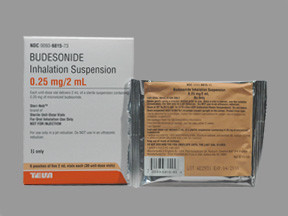
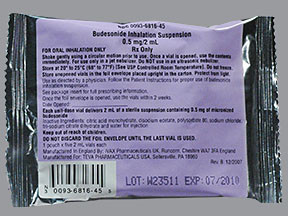
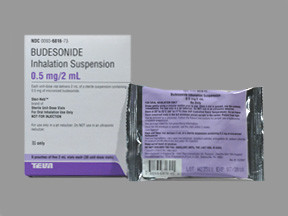
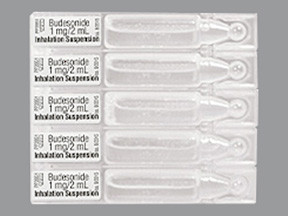
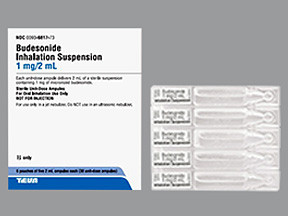
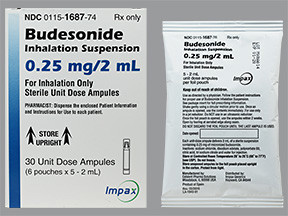
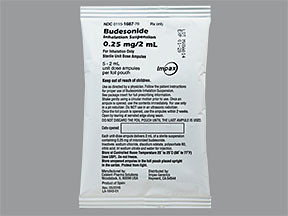
No Reviews Yet